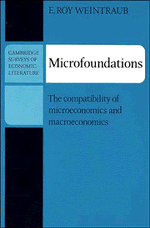9 - Edgeworth disequilibrium analysis
Published online by Cambridge University Press: 03 May 2011
Summary
There is an analogue, for Edgeworth models, to disequilibrium analysis in Walrasian models. Instead of examining the market price adjustment mechanism, one could examine the patterns of exchange that individual traders create and face when required to complete transactions out of equilibrium. If the Walrasian framework is a model of how the institutions of a competitive market serve to organize and stabilize economic activity, then the Edgeworth system, which abstracts from the price mechanism, may appear as neoinstitutionalism.
There are two distinct themes to this literature: (1) problems of coordination, of resource allocation proper, in systems without competitive markets or (2) problems of monetary theory, like the role of money in a dynamic exchange setting.
In this chapter we will examine how disequilibrium trading models can generate systemic coordination successes and failures. This family of models has something to contribute to the microfoundations of macroeconomics literature. It is possible to design institutional arrangements for the conduct of disequilibrium activity in such a way that, under one set of arrangements, trading activity leads to coherent outcomes, but under alternative structures, coordination failures abound. We can formalize the role of the medium of exchange money as a systemic coordinator and identify its place among alternative transactions facilitators.
Before we proceed, however, we must note one terminological muddle. In many surveys and discussions, “Edgeworth process” refers to a disequilibrium adjustment mechanism which utilizes a variant of the tatonnement in which there are two state variables, prices and individual stocks of commodities.
- Type
- Chapter
- Information
- MicrofoundationsThe Compatibility of Microeconomics and Macroeconomics, pp. 141 - 154Publisher: Cambridge University PressPrint publication year: 1979



